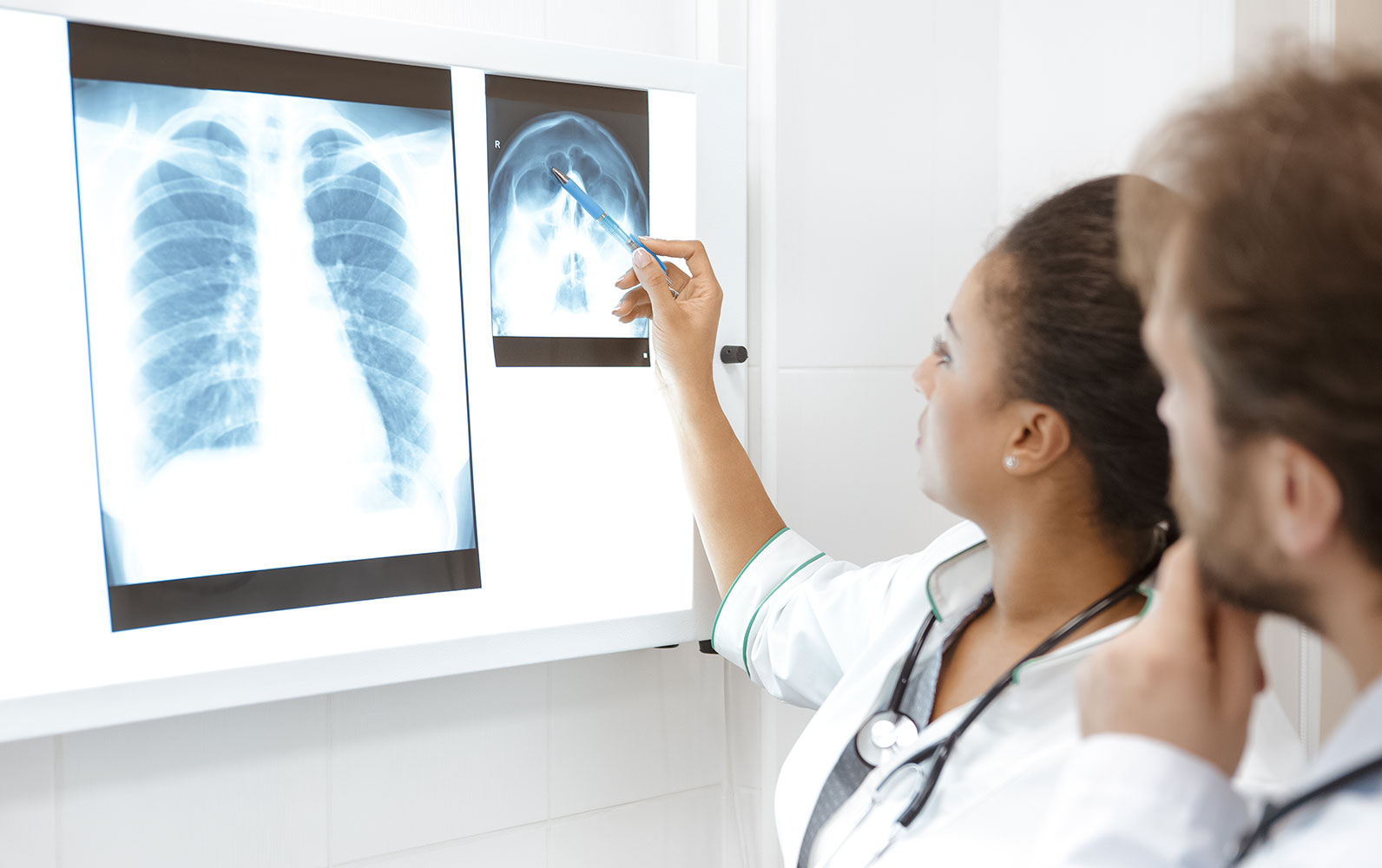St. Louis Bachelor’s Degree in Radiologic Technology (BS)
Bachelor of Science (BS) offered in On-campus and Blended formats.
*On-campus format will require some online classes for degree completion.
St. Charles / St. Louis
Radiologic Technology (BS)
This 106 credit-hour degree program is part of a joint affiliation with Mercy Hospital St. Louis - School of Radiologic Technology. Students will confer a Bachelor of Science (BS) in Radiologic Technology degree through a combination of program coursework at Lindenwood and Mercy.
The first two years of this St. Louis radiologic technology program are taught by Lindenwood faculty at Lindenwood University, consisting of program prerequisites and general education courses, totaling 65 credits. The last two years of the program are taught by Mercy's Radiography faculty and consist of 60 credit-hours. Students will have to apply to Mercy's program during their second year in the program for admission into the clinical portion of the degree. This St. Louis radiologic degree program includes professional training from a clinical school that is accredited by the Joint Review Committee on Education in Radiologic Technology, sponsored by the American Medical Association.

Core program curriculum will include Human Anatomy and Physiology, Microbiology for Health Sciences, Concepts in Chemistry, Radiologic technology, and more. Students in this degree program will have the opportunity to work with real patients and use the latest medical technology, including ultrasound, nuclear radiation, magnetic fields, and X-rays, giving students experiences they need to be skilled radiographers that can confidently perform imaging examinations and accompanying responsibilities on demand.
Upon completion of all degree program requirements, students will be eligible to sit for their American Registry of Radiologic Technologists (ARRT) certification exam and start their career as a radiographer.
Radiologic Technology Frequently Asked Questions
Why pursue a B.S. in Radiologic Technology?
With a Bachelor of Science in Radiologic Sciences, graduates have more education and therefore will stand out during the application process for radiology positions. They can take on additional responsibilities and advance their careers in a number of opportunities, including management/leadership roles, instructor positions, etc., while also increasing the starting salary.
Are there any program specific fees?
Students will be charged a Radiologic Technology Fee during junior/senior year while in clinical courses.
What do I need to complete for graduation?
To be eligible for graduation, the student must successfully complete the following:
- Patient Care requirements (CPR, vital signs, sterile technique, venipuncture, patient transfers, care of patient medical equipment).
- Terminal Competencies/Evaluation (average score of 2)
- Required Clinical Competencies (>85% average)
- Clinical courses with an accumulative of 85% or better
- Clinical rotations and objectives
- Program completion requirements
- Didactic objectives with an accumulative GPA of 2.0 or better
- Minimum number of clock hours
- Required program evaluations
A student who has not completed all graduation requirements of the school by graduation date will not be confirmed to take their ARRT certification exam. The student may be offered the option to complete needed requirements, if applicable. Once the student has satisfactorily completed the program’s requirements, the ARRT will be notified of their eligibility. Learn more about program requirements.
Will I be prepared to take the board exam that goes with Radiation Technology?
Yes, upon successful completion of the program, graduates are able to sit for the ARRT national board exam.
What do radiologic technologists do?
As the third largest group of health care professionals, the primary responsibility of radiologic technologists is to create images of patients’ bodies using medical equipment to help doctors diagnose and treat diseases and injuries.
Professional disciplines include:
-
Bone Densitometry
-
Breat Sonography
-
Cardiac Interventional Radiography
-
Computed Tomography
-
Magnetic Resonance Imaging
-
Mammography
-
Nuclear Medicine Technology
-
Radiation Theraphy
-
Radiography
-
Sonography
-
Vascular Interventional Radiography
-
Vascular Sonography
-
And more
What will my workdays be like?
As a radiologic technologist, you'll likely work in a hospital, physician’s office, outpatient care center, or laboratory. Your days will consist of both interacting directly with patients and doing technological tasks.
What is the job outlook?
Like many healthcare-related jobs, demand is projected to increase in the coming years. As the aging population grows and has more medical needs, there will be a rise in medical conditions that require imaging to help aid in diagnoses. According to the U.S. Bureau of Labor Statistics, the overall employment of radiologic and MRI technologists is projects to grow from 2021-2031.












